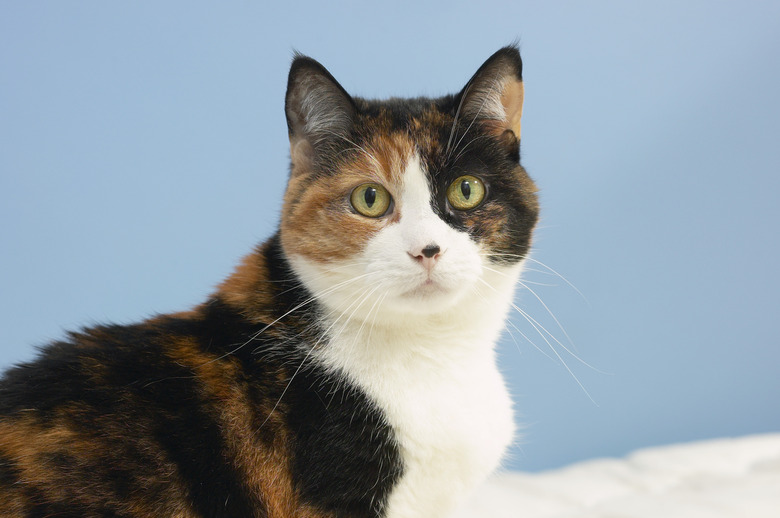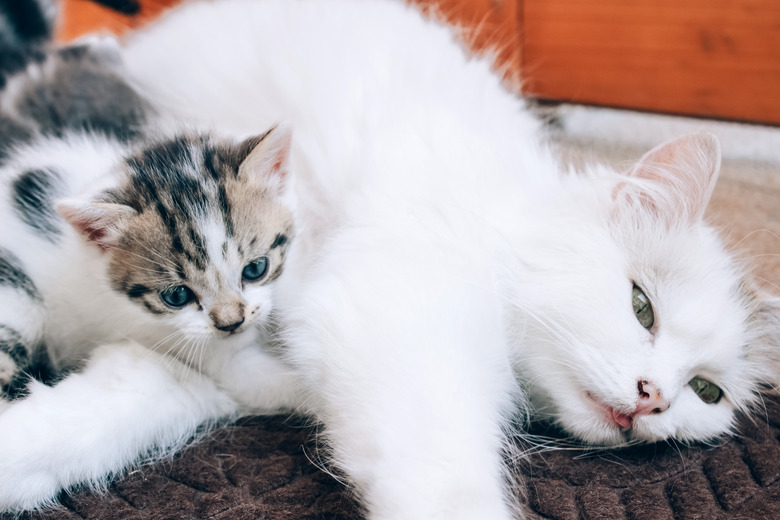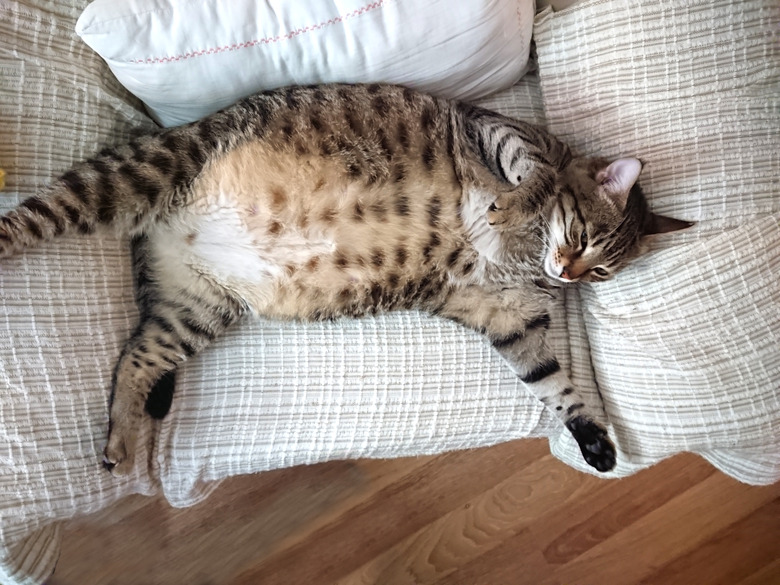Signs Before A Pregnant Cat Delivers
Waiting for the arrival of new kittens can be an exciting and nerve-wracking time for a cat owner. Recognizing when the pregnant cat shows signs of impending labor can ease your anxiety and make the process a comfortable one. Because labor typically begins between day 58 and day 65 in pregnancy, begin closely observing your queen in the few weeks leading up to her delivery.
Nesting behavior before birthing
Nesting behavior before birthing
As with a human female, the pregnant cat, called a queen, may begin the nesting process in the weeks leading up to her delivery. She may search for a safe and quiet place for her labor and birth experience. You can help this process by providing a box or bed large enough to accommodate her litter.
A queen can have between one to eight kittens per litter, averaging between two and five. Keep food and water nearby, along with a litter box so she won't have to go far. A box filled with newspaper that is covered with blankets makes an ideal "maternity" spot for your queen. Make sure the box is placed in an area away from cold drafts that may chill the newborn kittens.
Physical signs of labor
Physical signs of labor
As the queen's pregnancy comes to a close, her hunger will increase as the kittens grow. About three weeks prior to her approximate delivery date, begin supplementing her diet with premium kitten food. The amount can be increased each week until birth and continued until the kittens are weaned. You can expect her to eat double what she ate prior to pregnancy.
Another physical sign that your cat is nearing labor is the change in the appearance of her nipples. Around delivery, her nipples will grow larger and pinker, while beginning a milky discharge. Days prior to her labor, she may have a lower body temperature and exhibit nausea signs, including loss of appetite or lack of interest in food. Upon examination of her stomach, you may observe movement from the kittens inside.
Behavioral changes before labor
Behavioral changes before labor
Other pregnant cat signs of impending labor include behavioral changes. The queen may become less active than normal and clingier to humans. Her nerves may cause her to seek your company for security. Help this anxiety by petting and stroking her, and giving her love and attention.
An imminent labor sign is a dramatic change in her meowing. Her typical meow will sound like one of a cat in heat. She may also pant heavily and groom her genitals in response to her body's labor signals.
Signs of active labor
Signs of active labor
When labor is beginning, the queen paces in an uneasy and restless manner. This is her response to labor pains. Contractions may cause a colored or bloody discharge. The amniotic sac may even be noticeable. Be prepared with clean towels and newspapers to stimulate the kittens' breathing and for warmth.
Other items to have on hand include antiseptic ointment and dental floss for tying off the cord and stump care, as well as a nasal aspirator or eyedropper to clean out the kittens' nasal passages. Always keep a veterinarian's contact information handy in case assistance is required.


